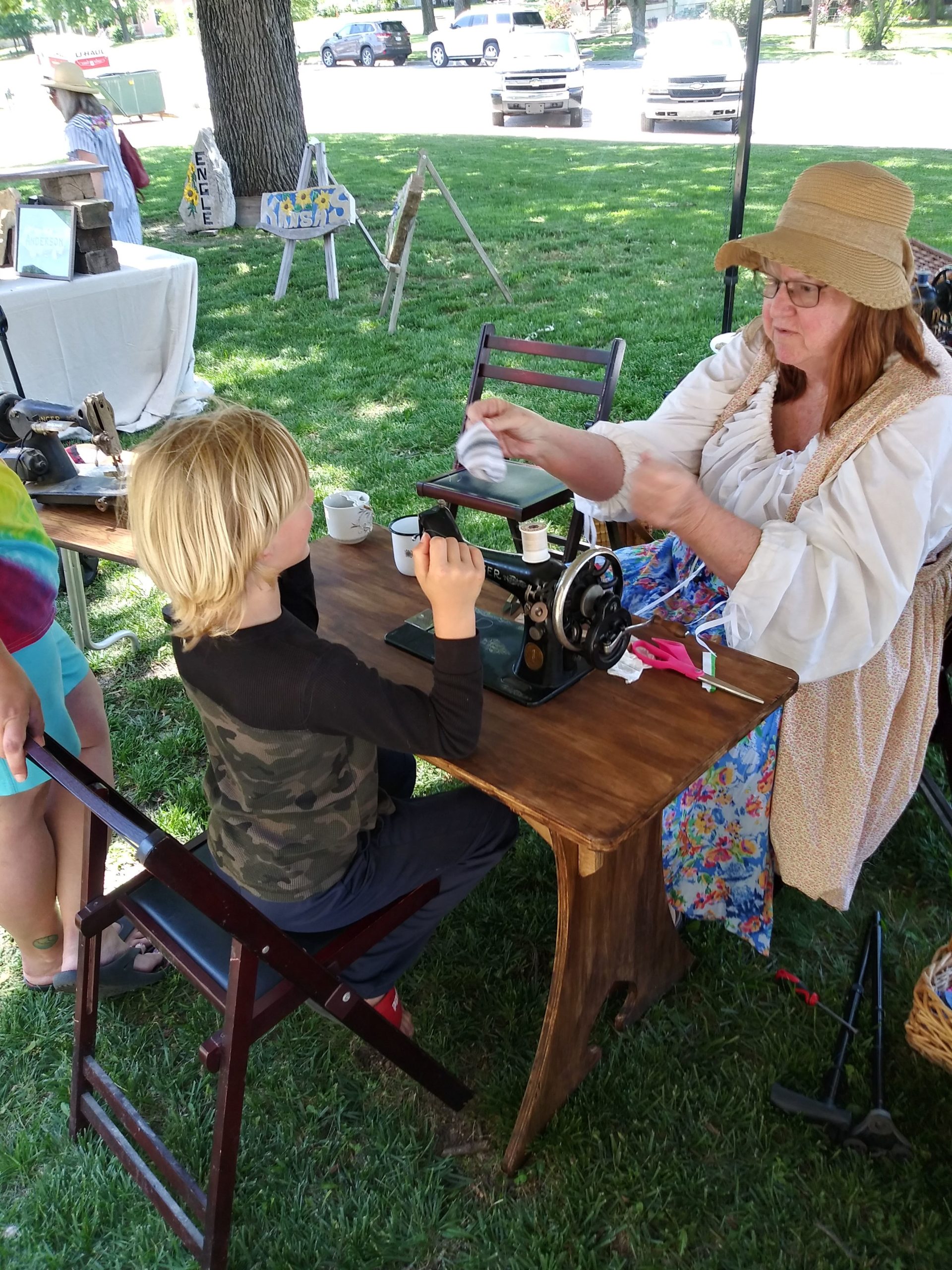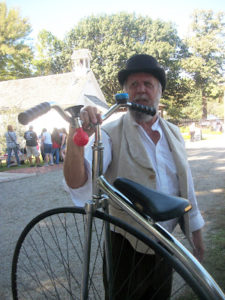Once a staple of everyday life, hand-operated machines are getting new attention thanks to a colorfully named group of Kansans.
Calling themselves Manipulators of Marvelous Manual Machines — or Merry Cranks for short — they make the rounds of city and county fairs, showing off devices that run on human power rather than electricity.
They came to their pastime by accident, when Iris Evans asked her boyfriend, Leon Fundenberger, to fix her mother’s old sewing machine. “I had no idea how to fix a sewing machine, but it was important to her, so I took it apart and figured it out after several tries,” he said with a laugh.
They started buying and restoring old treadles and manual sewing machines. While taking part in a contra dancing event in Cottonwood Falls, they showed a machine to the event organizer; she asked them to exhibit at an upcoming folk life fair. Their demonstration was a hit.
“We generally demonstrate hand-cranked sewing machines and penny-farthing bicycles,” Evans said. “On our Facebook page, we branch into other manual machines as well. There has been a demonstration of a razor blade sharpening device from the 1920s and apple peelers from the 1800s through the modern day. If it catches our eye, we’ll talk about it.”
A penny-farthing, popular in the 1870s and ’80s, was the first machine to be called a bicycle; it featured a large front wheel and smaller back one. With Fundenberger’s purchase of a penny-farthing bicycle, the couple began dressing in Victorian-era clothes and attending bicycle events. “I helped people use the sewing machines, and he let them sit on the penny-farthing for impromptu photo shoots,” Evans said. When demand called for additional help, they invited Fundenberger’s sister, Rita Kirkpatrick, to join them. She had come to appreciate the intricacies of yesteryear through her husband, Pat, before his death.
“Pat belonged to a group called the Kansas Muzzleloaders Association,” she said. “I went with him to a convention where there were history re-enactors. The trade room had leather, beads, furs, how-to books and many more items. I was fascinated when people dressed up in garb from fur trader days.”
“Museums always have signs telling people to look but not touch,” Fundenberger explained. “We wanted to get people’s hands on them.”
Their efforts eventually came to the attention of the Kansas Historical Society, which asked Merry Cranks to exhibit at a Kansas Day event in Topeka. Once again, the crowds were fascinated with the antique machines.
“Having you be part of Kansas Day truly helps make the event the success it is,” Lois Herr, the event coordinator, said in a note to the group. “Evaluations handed out to public, private, and home school teachers showed that the demonstrations of historic crafts and trades were one of the most important aspects of the event.”
In the era before electricity was widely available, sewing machines relied on hand power to operate. “Cranks supplied the power to move the needle,” Fundenberger noted. “Turning the crank causes the needle bar to go up and down. Below the deck, the bobbin catches the needle thread to form the stitch.”
Even today, hand power is still used in many parts of the world. “They can be used in campers or tents, or by folks who want to live off the grid,” Fundenberger said. “For beginners, they are great because the slow movements of the needle are very controlled and they are not as scary as electrically powered ones. There are many brands of machines that you may find with hand cranks, but if you are going to convert an electric to a hand crank, we would recommend you stick with Singers. There are reproduction cranks that can be found rather easily. Other brands will be much more work.”
At many of their demonstrators, the Merry Cranks teach children and adults how to create treasure pockets — a small sack with a flap — on the machines.
“It’s fun watching the little kids as they figure it out,” Fundenberger said. “They do amazingly good jobs.”
“I love the enthusiasm new sewers, not just children, have for the old machines,” Evans added. “They find the hand cranks non-threatening and user friendly. We are always hearing, ‘If I had one of these, I’d learn to sew.’ We are all for that!”
Contact Debbi Elmore at debbi.elmore2017@gmail.com













